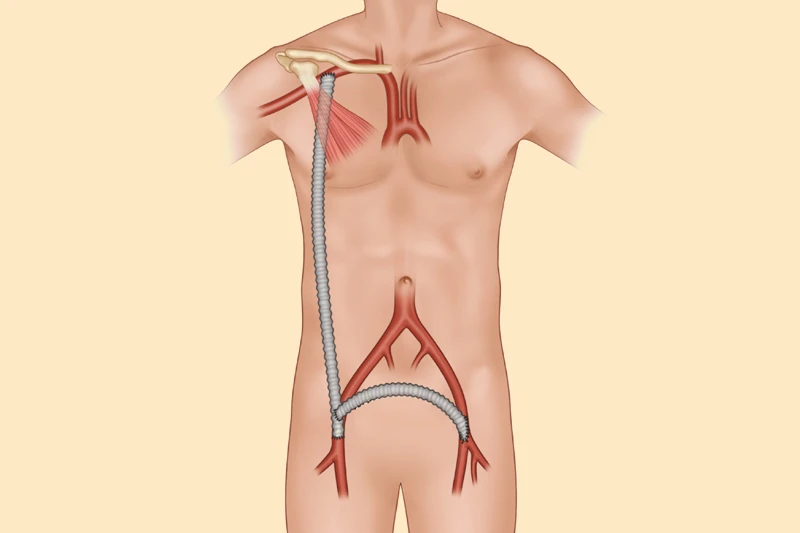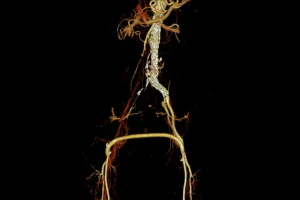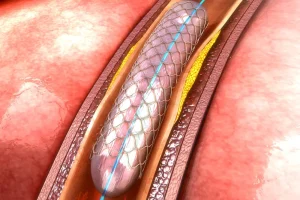Axillo-Bifemoral Bypass
A Lifesaving Solution For Restoring Blood Flow To The Lower Limbs
Home » Vascular and Endovascular Surgery » Axillo-Bifemoral Bypass
Medical Procedures
Vascular Techniques
Endovascular Techniques
Conditions Treated

Axillo-bifemoral bypass is a vascular procedure often recommended for patients considered high risk for standard aorto-bifemoral surgery, as it avoids opening the abdomen and exerts less stress on the heart. This surgery provides a vital solution for restoring blood flow to the lower limbs in patients with severe peripheral arterial disease. Understanding the procedure, benefits, risks, and recovery is essential for making an informed decision about this life-saving intervention. Schedule a consultation with a vascular specialist to determine if axillo-bifemoral bypass is appropriate for your condition.
Book an Appointment
What is Axillo-Bifemoral Bypass?
Axillo-bifemoral bypass involves:
- An incision in the chest near the shoulder (usually on the left or right side);
- Two incisions in the groin areas at the base of the legs;
- Placement of a synthetic graft under the skin, tunneled from the chest to both groins.
The incisions are then closed using absorbable sutures or metal staples, which are typically removed after approximately 10 days.
Who Should Consider This Procedure?
This procedure is indicated for patients with severe peripheral arterial disease who are not candidates for major abdominal surgery due to:
- Significant heart or lung disease;
- Advanced age;
- Other comorbidities that increase the risks of conventional surgery.
Axillo-bifemoral bypass is also suitable for patients with severe lower limb ischemia, including:
- Muscle pain while walking (intermittent claudication);
- Persistent pain at rest (critical ischemia);
- Ulcers or gangrene.
Benefits of Axillo-Bifemoral Bypass
- Relief from pain and improved quality of life;
- Restoration of blood flow to the lower limbs;
- Healing of wounds or ulcers caused by oxygen deprivation;
- Reduced risk of limb amputation;
- A safer alternative for patients who cannot undergo conventional surgery.
Possible Risks of the Procedure
As with all major surgeries, axillo-bifemoral bypass carries certain risks.
General postoperative risks include:
- Lung infections such as pneumonia;
- Heart attack;
- Acute kidney injury;
- Bruising around the incisions.
Risks specific to axillo-bifemoral bypass include:
- Graft thrombosis, which can block blood flow and may require additional surgery;
- Graft infection, occasionally necessitating replacement or long-term antibiotic therapy;
- Bleeding at graft attachment sites;
- Rarely, loss of a limb if circulation cannot be restored.
All risks will be explained in detail by the surgeon prior to the procedure.
What Happens After the Operation?
Postoperative care includes:
- Close monitoring during the first days after surgery;
- Administration of anticoagulants and antibiotics;
- Careful attention to incision sites;
- Avoidance of strenuous physical activity;
- Regular follow-ups to ensure the graft is functioning properly.
Conclusion
Axillo-bifemoral bypass is a complex yet essential procedure for patients with severe circulatory problems who cannot undergo conventional surgery. Although risks exist, the benefits—when properly indicated—are significant, including pain relief, improved mobility, and sometimes saving the affected limb. Patients experiencing leg pain, non-healing ulcers, or other signs of poor circulation should discuss this option with a vascular specialist.
Schedule an appointment now!
Do not delay treatment for severe arterial disease. Schedule a consultation at VenArt Clinic to explore how vascular bypass surgery can restore mobility and improve your vascular health.








